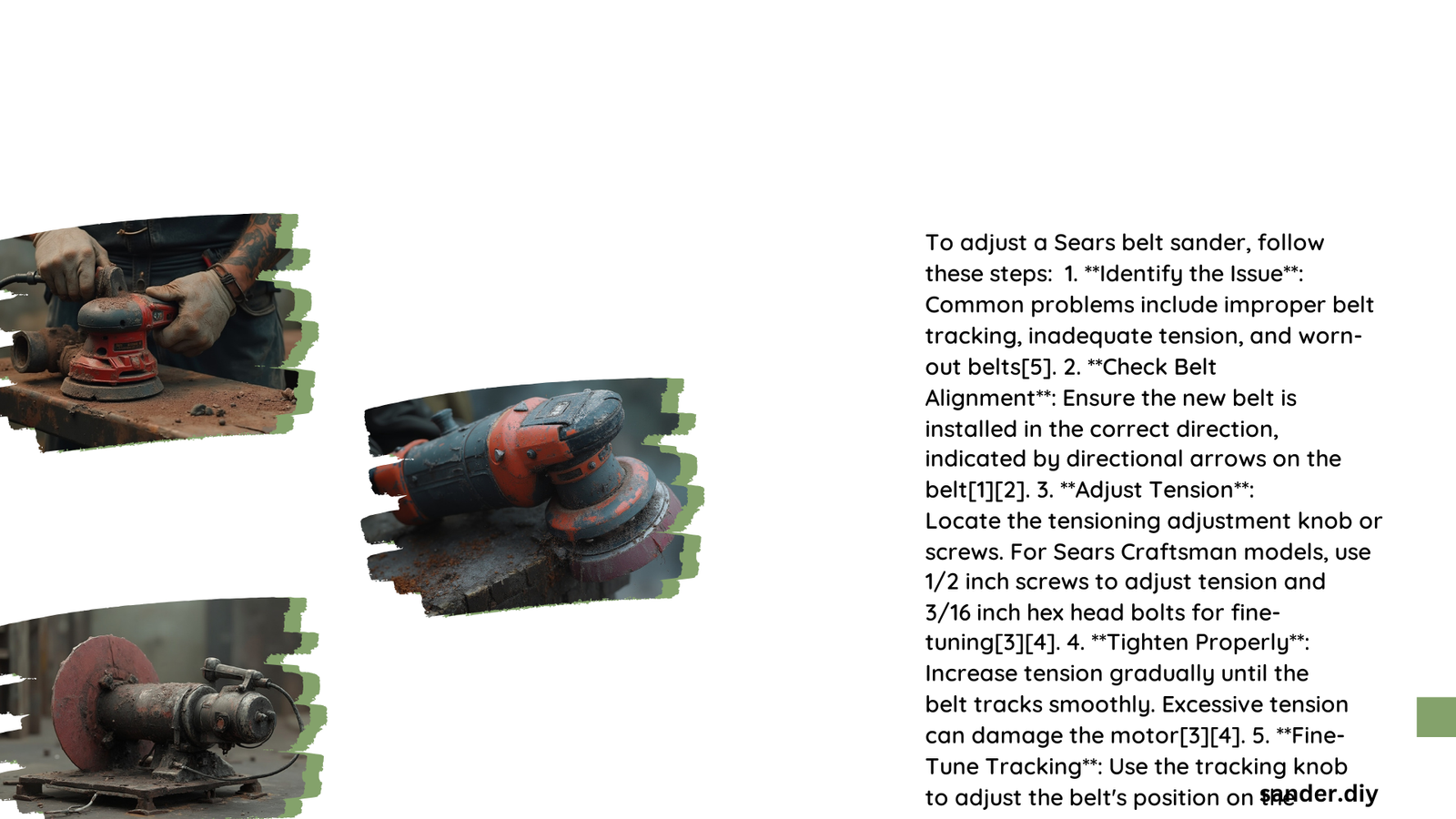Adjusting a Sears belt sander can be challenging for DIY enthusiasts and woodworking professionals. Many users encounter difficulties with belt tracking, tension, and alignment, which can significantly impact the sander’s performance and precision. This comprehensive guide will walk you through expert techniques to diagnose, adjust, and resolve common belt sander adjustment issues, ensuring optimal tool functionality and smooth sanding operations.
Why Do Belt Sanders Require Precise Adjustment?
Belt sanders demand meticulous adjustment to maintain:
– Accurate sanding performance
– Consistent belt tracking
– Minimal wear on sanding belts
– Safe operational conditions
What Causes Belt Tracking Problems?
| Problem | Potential Cause | Solution |
|---|---|---|
| Belt Drifting | Misaligned Rollers | Adjust Tracking Knob |
| Uneven Wear | Incorrect Tension | Reposition Belt |
| Slipping Belt | Worn Rollers | Replace Roller Bearings |
How to Diagnose Sears Belt Sander Tracking Issues?

Step-by-Step Diagnostic Process
- Visual Inspection
- Check belt alignment
- Examine roller condition
-
Inspect belt for uneven wear
-
Tracking Test
- Run sander on flat surface
- Observe belt movement
- Note any lateral drift
What Tools Do You Need?
Essential tools for belt sander adjustment:
– Flathead screwdriver
– Tracking adjustment wrench
– Clean cloth
– Replacement sanding belts
How to Perform Precise Belt Tracking?
Detailed Adjustment Technique
- Unplug Sander
- Ensure complete electrical disconnection
-
Remove battery if cordless model
-
Position Sander
- Place upside down
-
Ensure stable work surface
-
Locate Tracking Mechanism
- Find tension adjustment knob
- Identify tracking alignment indicators
Pro Tips for Accurate Adjustment
- Make quarter-turn adjustments
- Test after each minor modification
- Avoid over-tightening mechanisms
What Are Common Mistakes to Avoid?
Woodworkers frequently make these errors:
– Forcing belt into position
– Ignoring unusual vibrations
– Neglecting regular maintenance
– Using incorrect belt size
Safety Precautions
⚠️ Critical Safety Guidelines
– Always wear protective eyewear
– Disconnect power before adjustments
– Keep hands away from moving parts
– Work in well-ventilated area
Troubleshooting Advanced Scenarios
When to Seek Professional Help
Consider professional repair if:
– Tracking remains inconsistent
– Rollers show significant wear
– Adjustment mechanism feels damaged
Maintenance Recommendations
Preventive Care Strategies
- Clean rollers after each use
- Store in dry environment
- Lubricate moving parts annually
- Replace worn components promptly
Final Recommendations
Successful Sears belt sander adjustment requires patience, precision, and systematic approach. Regular maintenance and careful tracking will extend your tool’s lifespan and ensure superior sanding performance.
Recommended Belt Replacement Frequency
| Usage Intensity | Recommended Belt Replacement |
|---|---|
| Light | Every 6-12 months |
| Moderate | Every 3-6 months |
| Heavy | Every 1-3 months |
Reference:
– Sears Official Support
– Craftsman Tool Manuals
– Woodworking Tool Maintenance Guide
